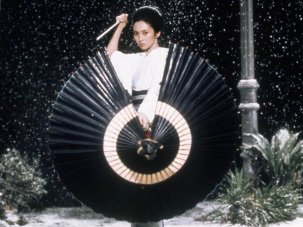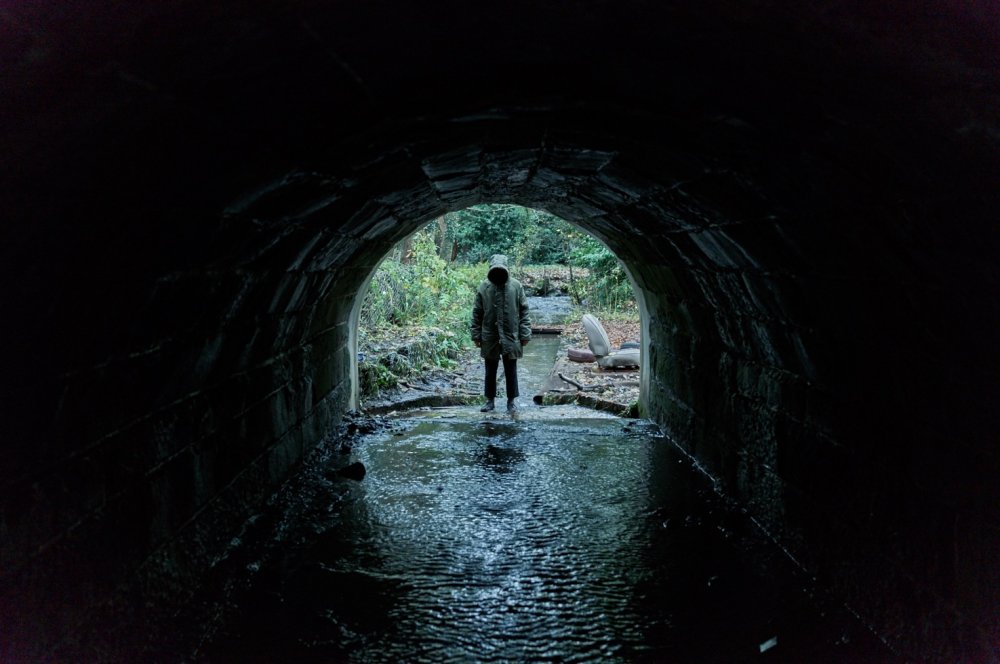
Ghost Stories (2017)
Typically comprising a number of self-contained tales linked by a framing device, the anthology horror movie has a long tradition stretching back at least as far as the German silent film Unheimliche Geschichten (1919). Yet the release that really popularised the format in the eyes of critics and audiences was Ealing Studios’ influential multi-part chiller Dead of Night in 1945.
In the 1960s, one studio in particular really ran with the idea. This was the UK horror factory Amicus – a name that’s still synonymous with the format. Their star-studded, sometimes moralistic, often camp tales of the undead are an essential part of British horror movie history. The films can be patchy, which is true of most anthology films: some stories are always better than others. But at their most successful, the horror anthology offers terror and fun by the bucketload.
More recent examples have updated the form by incorporating modern technology and present-day anxieties, but the impulse remains the same: to give audiences sharp shocks, jump scares and rug-pulling twist endings that unnerve, appal and satiate our endless desire to be scared witless.
With Andy Nyman and Jeremy Dyson’s portmanteau horror Ghost Stories (2017) now available to stream on BFI Player, we’ve rounded up 10 of its spookiest ancestors.
Dead of Night (1945)
Directors Alberto Cavalcanti, Basil Dearden, Charles Crichton and Robert Hamer
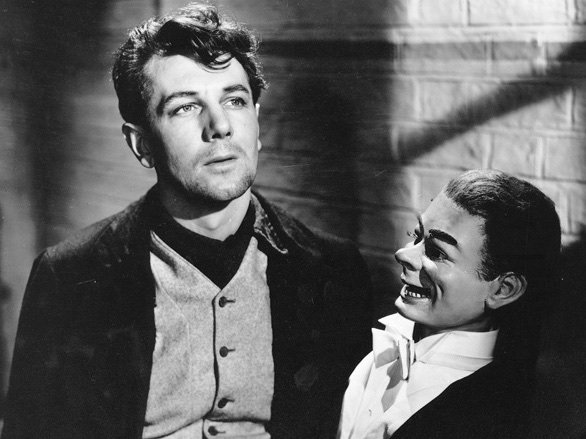
One of the few British horror movies of its era, Dead of Night is a bona fide classic of the genre that provided a blueprint for every anthology horror that followed in its wake. Ealing Studios would become better known for their comedies, but here blend terror, comedy and the fantastical into a collection of stories that offers plenty of fright to this day.
With its various premonitions, apparitions and supernatural occurrences, an ominous sense of dread permeates every frame, even during Dead of Night’s more light-hearted tale, ‘The Golfer’s Story’. The framing story, directed by Basil Dearden, with Mervyn Johns’ nightmare-suffering architect Walter Craig, climaxes with a dizzying montage sequence that’s fraught with the kind of existential dread that leaves an indelible mark on the psyche.
Best segment: The psychological torment of ‘The Ventriloquist’s Dummy’.
Kwaidan (1964)
Director Masaki Kobayashi
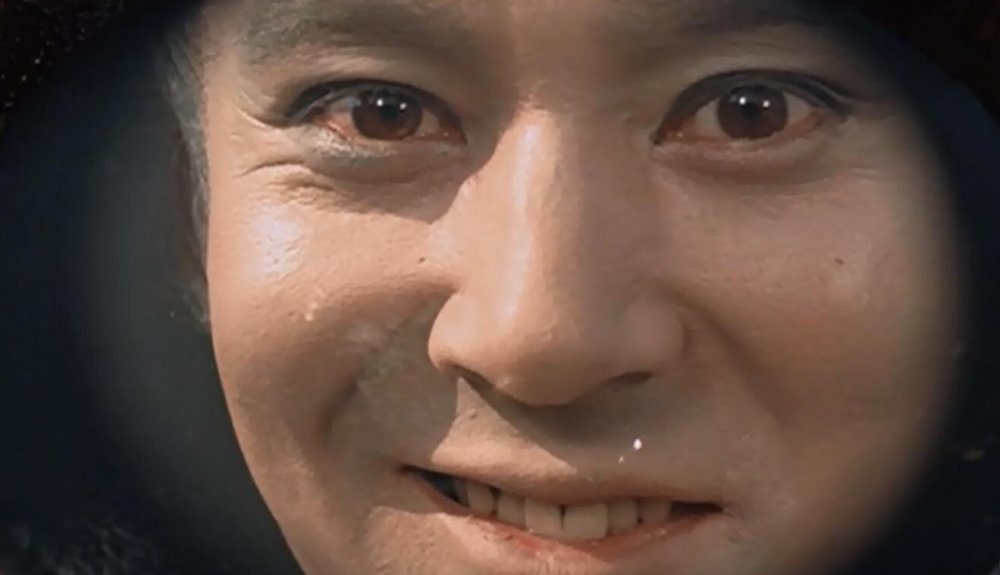
The deserving winner of the Special Jury Prize at the 1965 Cannes International Film Festival, Masaki Kobayashi’s epic, three-hour Kwaidan (meaning ‘Ghost Story’) is one of the most beautiful and eerie anthology horrors you’re ever likely to see.
Kobayashi’s first colour film, Kwaidan is a stunning visual representation of four Japanese folktales, primarily drawn from writer Lafcadio Hearn’s collection Kwaidan: Stories and Studies of Strange Things. Stunning production design, expressive camerawork and a highly evocative, sparse score bring to life the ghostly tales, which unfold at a stately pace, allowing the viewer time to become fully engrossed in each individual episode. With The Human Condition trilogy (1959-61) and Harakiri (1962) already under his belt, Kwaidan continued Kobayashi’s golden run.
Best segment: The sinister folklore tale of ‘Hoichi the Earless’.
Dr. Terror’s House of Horrors (1965)
Director Freddie Francis
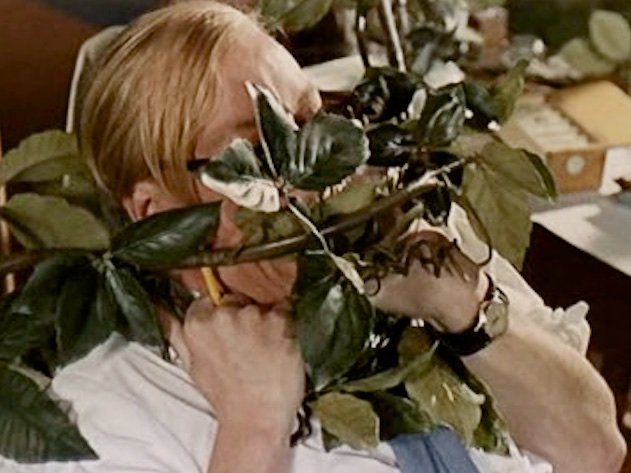
The first of Amicus’s septet of anthology horror movies, Dr. Terror’s House of Horrors initially began as an idea for a TV series in the late 1940s, which Amicus’s later co-founder, Milton Subotsky, hoped would replicate the success of Dead of Night. It would be close to 20 years before Subotsky’s unsettling, self-penned tales would make it to the screen, with Freddie Francis directing the first of his three Amicus anthologies.
An eclectic cast featuring Christopher Lee, Donald Sutherland and Alan ‘Fluff’ Freeman take on the various roles of train passengers whose possible doomed futures are presented to them by Peter Cushing’s tarot-card-wielding Dr Schreck. The horrors encountered by the ill-fated travellers include lycanthropy, vampirism and voodoo, with the tarot pack’s death card an omnipresent fixture. As with most anthology horrors, the linking story’s conclusion provides a suitably chilly – and permanent – ending for those involved.
Best segment: The horticultural horror of ‘Creeping Vine’.
Tales from the Crypt (1972)
Director Freddie Francis
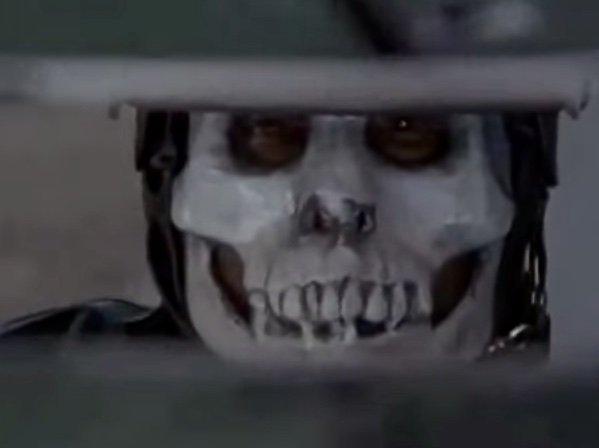
The highpoint of Amicus’s anthology horrors, Tales from the Crypt was based on the EC comics of the same name, also drawing on their The Vault of Horror series. Adapted for the screen by lifelong horror comics fan Milton Subotsky, its five unsettling stories are related by Ralph Richardson’s sinister crypt keeper, who is stumbled upon by an unfortunate quintet of tourists exploring ancient catacombs.
Macabre and moralistic, the movie’s individual tales all have a no-bad-deed-goes-unpunished attitude, which spells doom for the likes of Joan Collins, Ian Hendry and Nigel Patrick’s respectively murderous, deceitful and cold-hearted characters. Both camp and cruel, Subotsky and director Freddie Francis’s take on the movie’s various source stories each packs a satisfyingly twisted sucker-punch for the five less-than-upstanding travellers. Their meeting with the crypt keeper is revealed to be pre-ordained at the movie’s fittingly bleak climax.
Best segment: The perpetually looping terror of ‘Reflection of Death’.
Creepshow (1982)
Director George A. Romero
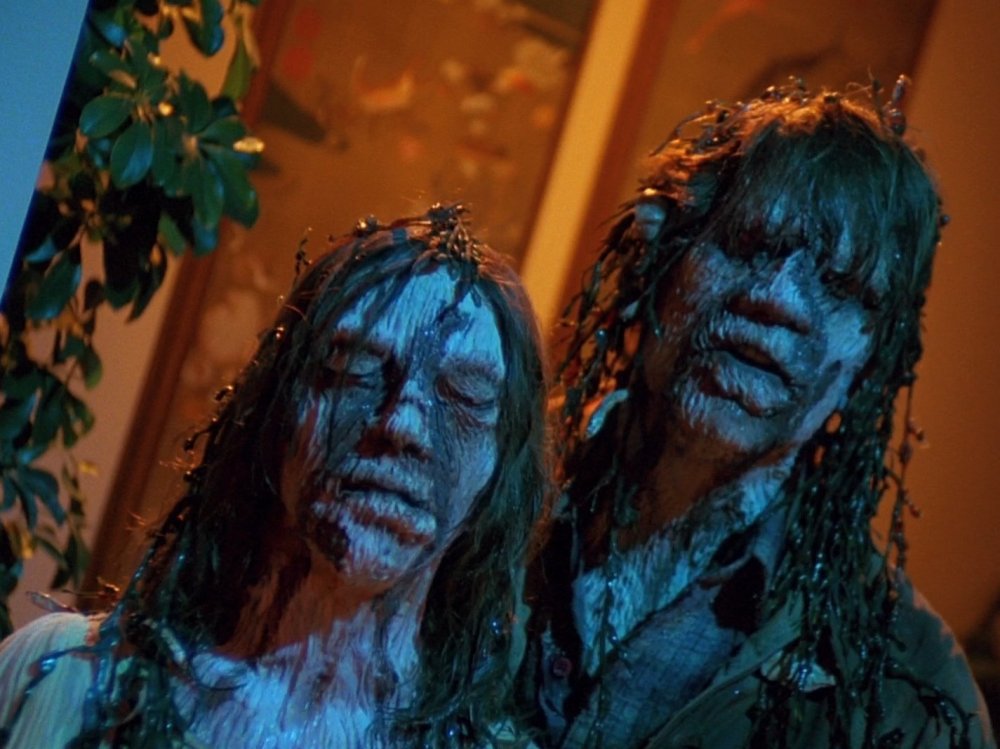
When George A. Romero and Stephen King teamed up to pay affectionate homage to the EC and DC horror comics of their respective childhoods, the result was a memorable brew of gruesome effects, dark humour and reverential comic-book stylings. Worked up from King’s first screenplay (and including his first acting credit), Creepshow sees a host of stars including Leslie Nielsen, Ted Danson, Ed Harris and Adrienne Barbeau come face to face with reanimated corpses, alien flora, vicious, fanged creatures and, in ‘They’re Creeping Up on You’, 20,000 cockroaches.
Romero’s frequent collaborator Tom Savini delivered the movie’s special effects, which were designed to mimic the gaudy imagery of the comic books. Raking in over $21m and briefly holding top spot at the US box office, Creepshow has gone on to become both a cult favourite and an integral part of Romero’s filmography
Best segment: The watery chills of ‘Something to Tide You Over’.
Twilight Zone: The Movie (1983)
Directors John Landis, Steven Spielberg, Joe Dante and George Miller
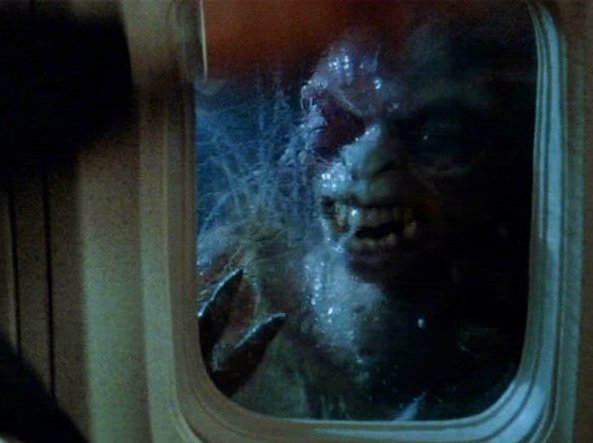
This big-screen tribute to Rod Serling’s classic TV anthology series was tragically marred by the on-set deaths of Vic Morrow and child actors Myca Dinh Le and Renee Shin-Yi Chen when the filming of a stunt involving a helicopter went disastrously wrong. Notoriety aside, Twilight Zone: The Movie is a largely solid feature-length take on the long-running show, the influence of which can still be felt in cinemas and on TV screens today.
Blending science fiction, outright terror, moral lessons and dark comedy, the film’s high points far outweigh its more uneven moments. As well as the marquee names of its individual stories’ directors, Twilight Zone: The Movie also boasts actors including John Lithgow, Dan Aykroyd, Kathleen Quinlan and Scatman Crothers. It comprises one original story and three remakes of episodes from the TV show, wrapped together with a linking story that provides one of the great cinematic jump-scares.
Best segment: The airplane set dread of ‘Nightmare at 20,000 Feet’.
Three… Extremes (2004)
Directors Fruit Chan, Park Chan-wook and Takashi Miike
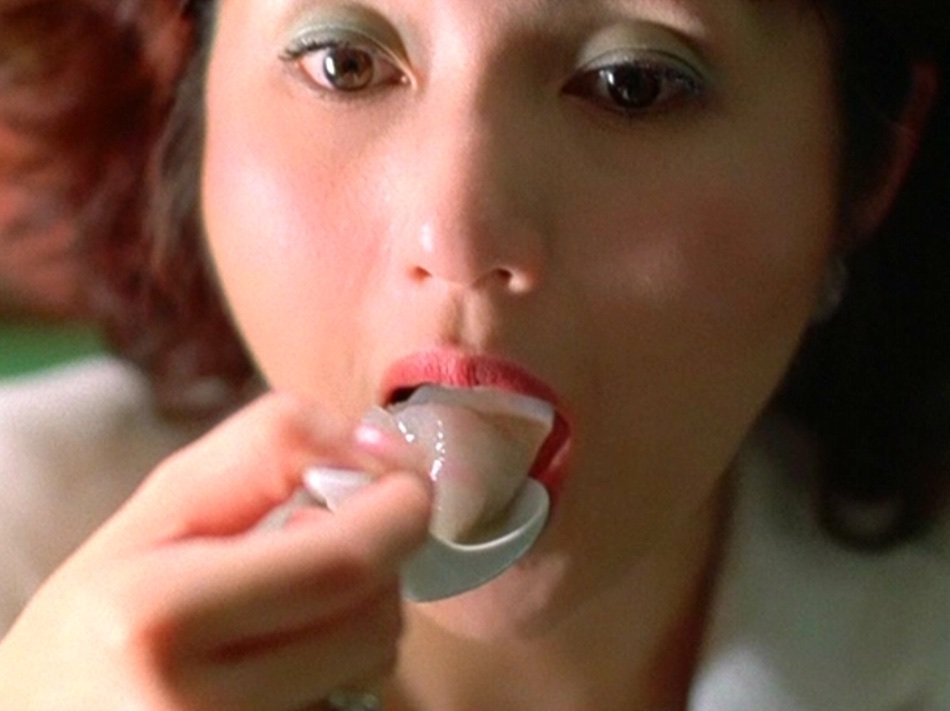
Described by Roger Ebert as “deeply, profoundly creepy”, Three… Extremes features the work of three of Asia’s most gifted genre directors: Fruit Chan, Takashi Miike and Park Chan-wook. A sequel to the similarly conceived and structured Three (directed by Kim Jee-woon, Nonzee Nimibutr and Peter Ho-Sun Chan in 2002), Three… Extremes likewise had no framing story and its three segments were directed by filmmakers from three different countries – in this case Hong Kong, South Korea and Japan.
Stylish, queasily unsettling and at times brutal, this collaborative project perfectly showcased the stark, bloody and twisted worlds of J- and K-horror, as well as Asian horror movies more generally. In portraying tales of cannibalism, torture and psychological torment, the three segments’ individual directors bring their own filmmaking styles to bear on a movie that, like Kwaidan, has a very different feel to the anthology horrors produced in the west.
Best segment: The gastronomic shock of ‘Dumplings’.
Trick ’r Treat (2007)
Director Michael Dougherty
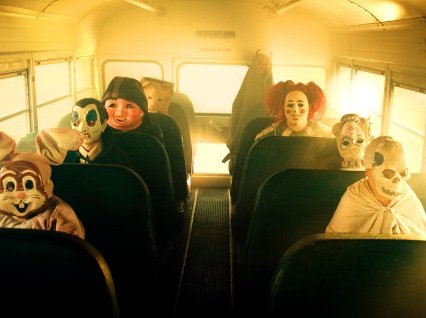
Featuring similar comic-book stylings to Romero’s Creepshow, Michael Dougherty’s self-penned, hugely entertaining Trick ’r Treat was somehow not deemed worthy of a full theatrical release by Warner Bros. Slated for cinemas in 2007, the movie was eventually released direct to DVD and Blu-ray in 2009 despite being publically and critically acclaimed after a small number of theatrical screenings.
Running at a bite-sized 82 minutes and adding a twist to the anthology framework by also being non-linear, Dougherty’s anthology horror is one of the very few of its type to take place on or around Halloween. Set in the fictional town of Warren Valley, Ohio, the movie’s four gory tales play out over the course of one All Hallow’s Eve and are interlinked by the recurring, malevolent presence of Sam, a small boy dressed in pyjamas and a burlap sack. Zombies, werewolves and psychotic killers abound in an undervalued ode to both anthology horrors and the traditions of Halloween.
Best segment: The distinctly creepy ‘Halloween School Bus Massacre’.
V/H/S (2012)
Director Adam Wingard, David Bruckner, Ti West, Glenn McQuaid, Joe Swanberg and Radio Silence
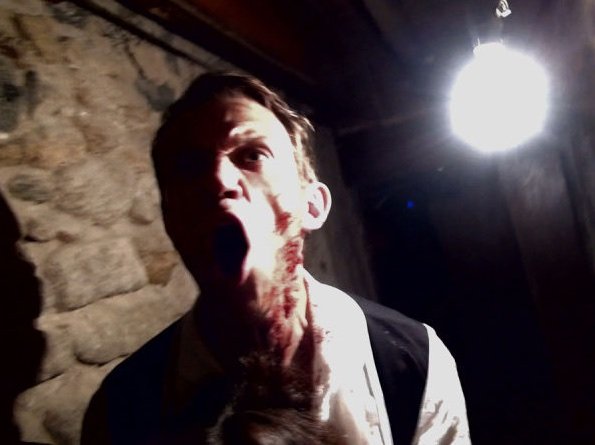
Hyper-kinetic, graphic and nihilistic in the extreme, V/H/S is a relentless anthology horror sure to repel as many as it attracts. With its traditional anthology structure and nostalgia for VHS technology and culture, this dark-hearted exercise in endurance is also very much a product of the internet age. An at times disorienting found-footage movie, V/H/S both apes and plays into the contemporary 24/7 world of online videos, webcams and gratuitous, instant cheap thrills. Among its five segments and wraparound story, however, are themes and entities that are familiar terrain for the anthology horror movie: a succubus, a psychopathic killer and a demonically possessed woman all rear their destructive heads.
The brainchild of Bloody Disgusting’s Brad Miska, V/H/S drew on a new generation of genre filmmakers, such as Adam Wingard and Ti West, while eschewing the use of guest stars seen in many other anthologies in favour of a younger, less established cast that’s more in keeping with the movie’s contemporary edge.
Best segment: The sci-fi-tinged bleakness of Joe Swanberg’s ‘The Sick Thing That Happened to Emily When She Was Younger’.
Southbound (2015)
Director Radio Silence, Roxanne Benjamin, David Bruckner and Patrick Horvath
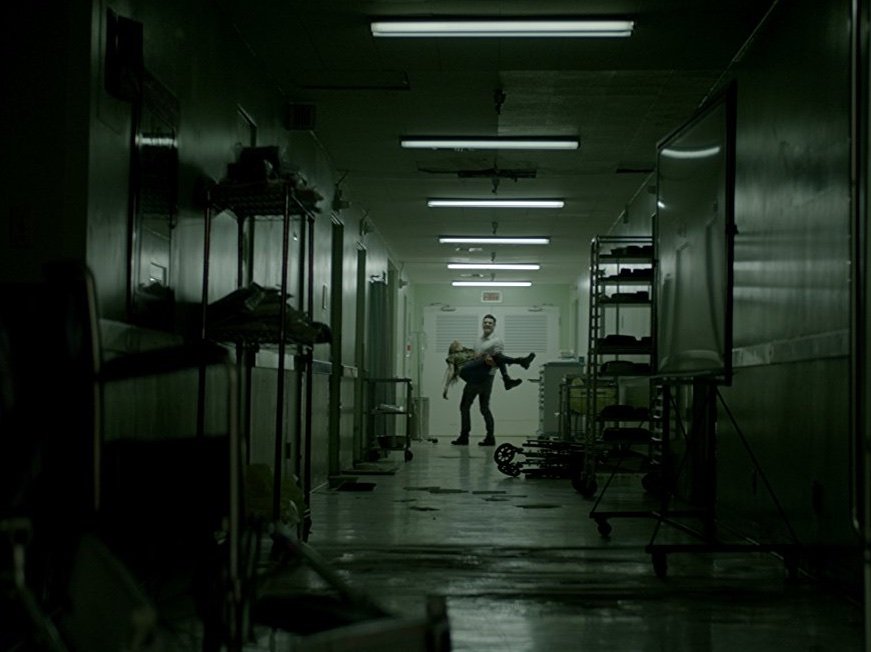
Another contemporary anthology horror with Brad Miska on board as producer, Southbound is a brain-twisting road movie whose horrors unfold along a sparsely populated stretch of desert highway. Southbound’s five individual tales are as tightly interwoven as the seemingly inescapable roads fatefully traversed by characters whose nightmares, secrets and flaws are all exposed in unnerving and terrifying fashion.
Lovecraftian creatures, demons and a bizarre cult are encountered in a hermetically sealed universe that provides clues, but tantalisingly no definitive answers, as to the underlying mystery at the movie’s dark heart. Are the characters trapped in some circle of Hell? Have they slipped into an alternate dimension? Shades of The Twilight Zone and Lost are evoked in this playful portmanteau, which is deeply satisfying precisely because the viewer is encouraged to search for meanings and fill in the blanks themselves. Backed by an ominous synth score, Southbound is also bone-crunchingly graphic.
Best segment: The surgical nightmare that is ‘The Accident’



